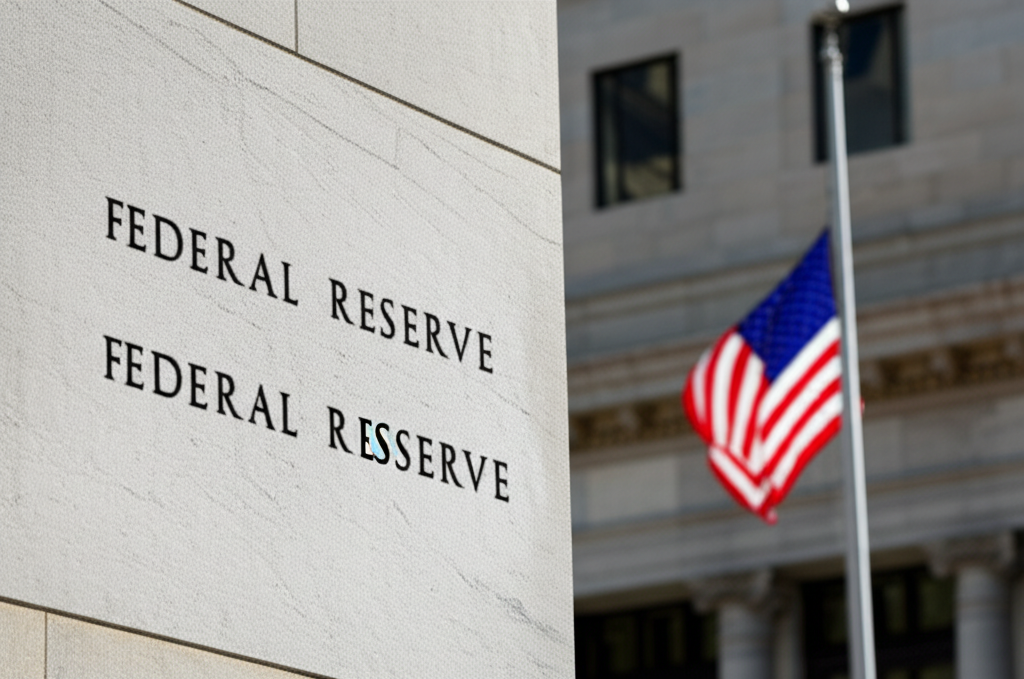Stocks Stall as Fed Signals End of 0% Era and Higher Long-Term Rates
Global financial markets witnessed a palpable tremor this week as the U.S. Federal Reserve delivered a clear, albeit nuanced, message: the era of ultra-low interest rates is definitively drawing to a close, and a future characterized by higher long-term borrowing costs is increasingly likely. The immediate market reaction saw major stock indices stall, reflecting investor unease about what this paradigm shift means for corporate earnings, economic growth, and asset valuations. This pronouncement signals a significant pivot in monetary policy, moving away from the accommodative stance that has defined much of the post-2008 and post-pandemic economic landscape.
For over a decade, and particularly during the immediate aftermath of the 2008 financial crisis and the 2020 COVID-19 pandemic, central banks worldwide, led by the Federal Reserve, maintained benchmark interest rates at or near zero percent. This period, often dubbed the “0% era,” was designed to stimulate economic activity by making borrowing incredibly cheap for businesses and consumers alike. Lower interest rates encourage investment, facilitate home purchases, and make credit more accessible, effectively flooding the economy with liquidity to spur growth and employment. Companies found it inexpensive to borrow for expansion, leading to increased hiring and capital expenditure, while investors flocked to equities in search of returns that bonds, with their paltry yields, simply couldn’t offer. This environment significantly fueled the impressive bull run in technology and growth stocks, whose valuations are highly sensitive to future earnings discounted at a low rate.
However, the unprecedented stimulus also contributed to inflationary pressures, which intensified significantly following supply chain disruptions and surging demand in the wake of the pandemic. In response, the Fed embarked on an aggressive rate-hiking cycle over the past year and a half to combat soaring prices. What has shifted recently, and what truly rattled markets, is the Fed’s updated Summary of Economic Projections (SEP) – often visualized through the infamous “dot plot.” This latest projection not only indicated a potential for one more rate hike in the near term but, more critically, suggested that policymakers now foresee the “neutral” long-term interest rate, the theoretical rate at which monetary policy is neither stimulative nor restrictive, settling at a higher level than previously anticipated. This isn’t just about the immediate future; it’s about the Fed’s assessment of the economy’s underlying capacity and inflation drivers, suggesting that rates might not return to their historical lows even after inflation is brought under control.
The implications of persistently higher long-term rates are far-reaching. For the stock market, especially for young investors building their portfolios, this means a re-evaluation of asset valuations. Growth companies, which promise significant earnings far into the future, become less attractive when those future earnings are discounted back to the present at a higher rate. Their cost of capital also increases, potentially slowing innovation and expansion if they rely heavily on debt financing. Conversely, “value” stocks, particularly those in sectors like financials or industrials that benefit from higher rates or have stable, immediate earnings, may find themselves relatively more appealing. Beyond equities, the bond market will adjust to a new reality, with higher yields making fixed-income investments more attractive, potentially drawing capital away from riskier assets like stocks. For the broader economy, higher rates translate to more expensive mortgages, higher credit card interest, and increased borrowing costs for businesses. While this is intended to cool inflation, it also poses a risk to economic growth, raising concerns about a potential slowdown or even a recession. Consumers might reduce discretionary spending, and companies might scale back investment, impacting job creation.
Ultimately, the Federal Reserve’s latest signals mark a fundamental shift in the economic landscape. The days of essentially free money are over, replaced by an environment where capital has a higher cost and a more discernible value. While this transition may introduce volatility and uncertainty into financial markets, it also represents a return to more normalized monetary policy. For young adults navigating their financial futures, understanding this shift is paramount. It underscores the importance of a diversified investment strategy, a clear understanding of personal debt, and an agile approach to saving and investing in a world where the cost of money is no longer negligible. The market’s initial stall is a recognition of this new reality, a recalibration in real-time to a future where interest rates are expected to remain elevated, challenging long-held assumptions about investment returns and economic expansion.





